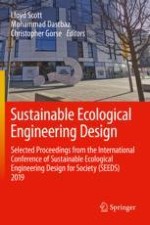2020 | OriginalPaper | Buchkapitel
Future Cities: The Role of Biomimicry Architecture in Improving Livability in Megacities and Mitigating Climate Change Risks
verfasst von : Samaa E. Helmy, Mohsen M. Aboulnaga
Erschienen in: Sustainable Ecological Engineering Design
Aktivieren Sie unsere intelligente Suche, um passende Fachinhalte oder Patente zu finden.
Wählen Sie Textabschnitte aus um mit Künstlicher Intelligenz passenden Patente zu finden. powered by
Markieren Sie Textabschnitte, um KI-gestützt weitere passende Inhalte zu finden. powered by
